-
 Bitcoin
Bitcoin $106,731.2224
-1.05% -
 Ethereum
Ethereum $2,444.9804
-1.20% -
 Tether USDt
Tether USDt $1.0003
0.01% -
 XRP
XRP $2.1882
0.09% -
 BNB
BNB $651.1435
-0.61% -
 Solana
Solana $148.3252
-2.09% -
 USDC
USDC $1.0000
0.01% -
 TRON
TRON $0.2787
0.55% -
 Dogecoin
Dogecoin $0.1598
-3.16% -
 Cardano
Cardano $0.5520
-2.43% -
 Hyperliquid
Hyperliquid $39.0960
-2.64% -
 Bitcoin Cash
Bitcoin Cash $516.9519
2.98% -
 Sui
Sui $2.7011
-2.95% -
 Chainlink
Chainlink $13.0582
-1.71% -
 UNUS SED LEO
UNUS SED LEO $8.9250
-2.53% -
 Stellar
Stellar $0.2359
-0.18% -
 Avalanche
Avalanche $17.3856
-3.73% -
 Toncoin
Toncoin $2.8095
-3.56% -
 Shiba Inu
Shiba Inu $0.0...01121
-1.95% -
 Litecoin
Litecoin $85.2795
-0.85% -
 Hedera
Hedera $0.1471
-2.15% -
 Monero
Monero $319.8004
1.12% -
 Dai
Dai $1.0001
0.01% -
 Ethena USDe
Ethena USDe $1.0001
0.02% -
 Bitget Token
Bitget Token $4.5344
-1.07% -
 Polkadot
Polkadot $3.3224
-2.96% -
 Uniswap
Uniswap $6.9697
-2.75% -
 Aave
Aave $266.1658
-2.25% -
 Pepe
Pepe $0.0...09414
-3.41% -
 Pi
Pi $0.4913
-3.29%
Can a physical item be an nft?
A physical item can become an NFT through tokenization, where its digital representation is stored on the blockchain to prove ownership and authenticity.
Jul 01, 2025 at 06:07 am
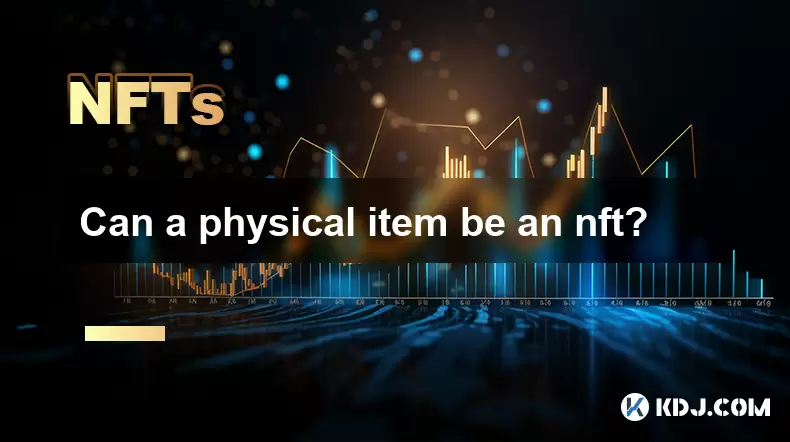
Understanding the Concept of NFTs
An NFT (Non-Fungible Token) is a unique digital asset that represents ownership of a specific item or content on the blockchain. While many people associate NFTs with digital art, music, or virtual collectibles, the question arises: Can a physical item be an NFT? The short answer is yes — but with important distinctions.
The key to understanding how a physical object can become an NFT lies in the concept of tokenization. This process involves creating a digital representation of a real-world asset on a blockchain. The NFT then acts as a proof of ownership and authenticity, linked to the physical item through smart contracts or other verification methods.
How Physical Items Are Represented as NFTs
To turn a physical item into an NFT, it must first be digitized in some form. This typically involves:
- Capturing high-resolution images or videos of the item
- Creating metadata that describes the item’s attributes
- Minting this data as an NFT on a blockchain like Ethereum, Solana, or Polygon
Once this is done, the NFT exists on the blockchain while the physical item remains separate. Ownership of the NFT does not automatically grant possession of the physical object unless explicitly stated in the terms of sale or transfer. Therefore, the connection between the NFT and the tangible item must be clearly defined and agreed upon by all parties involved.
Use Cases for Physical Item NFTs
Several industries have begun exploring the integration of physical goods with NFTs:
- Luxury Goods: Brands like Gucci and Louis Vuitton have experimented with NFTs tied to physical products, offering buyers both a digital certificate and the actual item.
- Real Estate: Property deeds are being tokenized as NFTs, allowing for transparent and secure property transfers without traditional intermediaries.
- Automotive Collectibles: High-end car manufacturers have started issuing NFTs for limited edition models, linking digital ownership records with the physical vehicle.
- Sports Memorabilia: Physical trading cards or signed jerseys often come with NFTs that provide provenance and facilitate trading on digital platforms.
These examples illustrate how physical items can coexist with their digital counterparts, enhancing transparency, traceability, and value in various markets.
The Role of Smart Contracts in Bridging the Gap
Smart contracts play a crucial role in ensuring that the relationship between the NFT and its associated physical item is enforceable and verifiable. These self-executing contracts can include clauses such as:
- Conditions under which the physical item will be delivered
- Transfer mechanisms if the NFT changes hands
- Authentication protocols using QR codes, RFID tags, or serial numbers linked to the blockchain
By embedding these rules directly into the blockchain, smart contracts help maintain trust and reduce fraud. For instance, a buyer purchasing a rare painting as an NFT can verify the artwork’s origin and ensure that they receive the physical piece once the transaction settles.
However, enforcing the delivery of the physical item still relies on centralized systems or trusted third parties, which introduces potential vulnerabilities.
Challenges and Limitations
Despite the growing interest in linking physical assets with NFTs, several challenges persist:
- Storage and Logistics: Ensuring the safekeeping and transportation of physical items requires infrastructure beyond the blockchain.
- Authentication Risks: Fake or counterfeit items may still be tokenized if proper verification steps aren’t followed.
- Legal Ambiguity: Jurisdictions vary in their recognition of NFTs as legal proof of ownership for physical assets, leading to potential disputes.
Moreover, there is always the risk of disconnection between the NFT and the physical item. If the owner of the NFT cannot claim or access the real-world asset due to mismanagement or fraud, the digital token becomes essentially meaningless.
Practical Steps to Create an NFT Linked to a Physical Item
If you're interested in minting an NFT connected to a physical item, here's a detailed guide:
- Choose a platform that supports physical asset NFTs, such as Rarible, OpenSea, or specialized marketplaces like Boson Protocol
- Prepare high-quality media files of your item along with descriptive metadata
- Select a blockchain network (Ethereum is common, but gas fees should be considered)
- Connect your wallet (MetaMask, Trust Wallet, etc.) to the chosen platform
- Upload your files and fill out the required details including name, description, and properties
- Set up the smart contract conditions linking the NFT to the physical item
- Pay the gas fee and finalize the minting process
After minting, ensure that buyers understand how they will receive the physical item and what rights they gain through owning the NFT.
Frequently Asked Questions
Q: Can I lose my physical item if I sell the NFT linked to it?
A: Yes, assuming the terms of the sale specify that ownership of the NFT includes the physical item. It’s essential to clarify this before finalizing any transaction.
Q: Is it possible to tokenize multiple physical items into one NFT?
A: Yes, especially in cases where the items are related or part of a collection. However, each individual item should be clearly described within the NFT metadata.
Q: How do I prove that a physical item corresponds to a specific NFT?
A: You can use unique identifiers such as serial numbers, holograms, or embedded chips that link back to the NFT via blockchain verification tools.
Q: Are there legal protections when buying a physical item through an NFT?
A: Legal frameworks around NFT-based physical asset sales are still evolving. It’s advisable to consult legal professionals and use platforms that offer dispute resolution mechanisms.
Disclaimer:info@kdj.com
The information provided is not trading advice. kdj.com does not assume any responsibility for any investments made based on the information provided in this article. Cryptocurrencies are highly volatile and it is highly recommended that you invest with caution after thorough research!
If you believe that the content used on this website infringes your copyright, please contact us immediately (info@kdj.com) and we will delete it promptly.
- Deutsche Bank's Bitcoin Custody Play: A New York Minute on Crypto Services
- 2025-07-01 22:30:12
- ZachXBT, Ripple, and RLUSD Adoption: A Deep Dive
- 2025-07-01 22:30:12
- Open XP Redemption on Optimism: Get Ready for OP Tokens on July 15!
- 2025-07-01 22:35:12
- Altcoins in June 2025: Data, Trends, and What's Next for Crypto
- 2025-07-01 21:30:12
- SUI Price Breakout Watch: Will 2025 Forecasts Hit the Mark?
- 2025-07-01 21:30:12
- BTCBULL: Riding Bitcoin's Bull Run to Crypto Glory
- 2025-07-01 20:30:11
Related knowledge
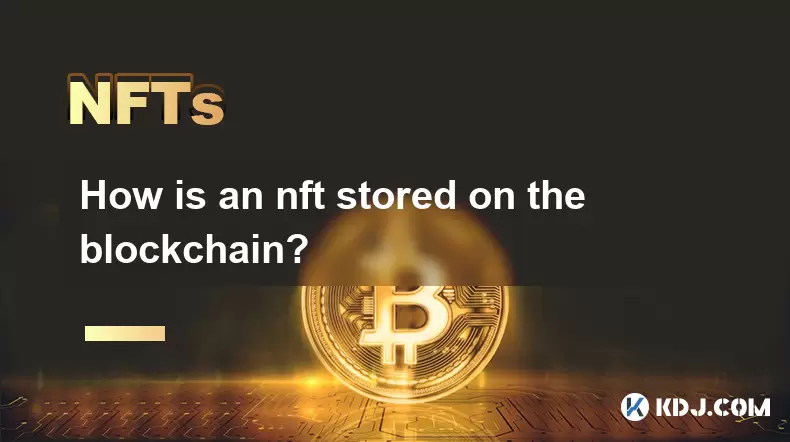
How is an nft stored on the blockchain?
Jul 01,2025 at 04:07am
How Is an NFT Stored on the Blockchain?Non-Fungible Tokens (NFTs) have revolutionized how digital assets are owned, verified, and transferred. Understanding how an NFT is stored on the blockchain provides clarity on its uniqueness, immutability, and traceability. Understanding the Basic Structure of an NFTAn NFT is a unique token that represents ownersh...
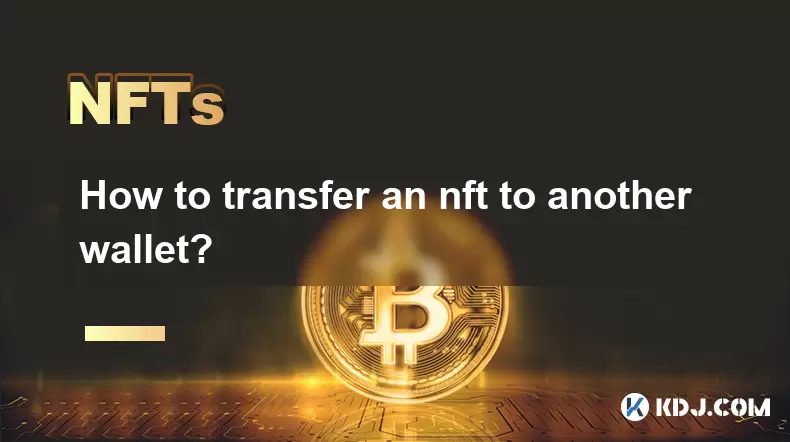
How to transfer an nft to another wallet?
Jul 01,2025 at 10:21am
Understanding the Basics of NFT TransfersTransferring an NFT (Non-Fungible Token) from one wallet to another is a common operation in the blockchain space. Before proceeding, it's crucial to understand what an NFT represents: a unique digital asset stored on a blockchain, typically Ethereum or other compatible chains like Binance Smart Chain or Solana. ...
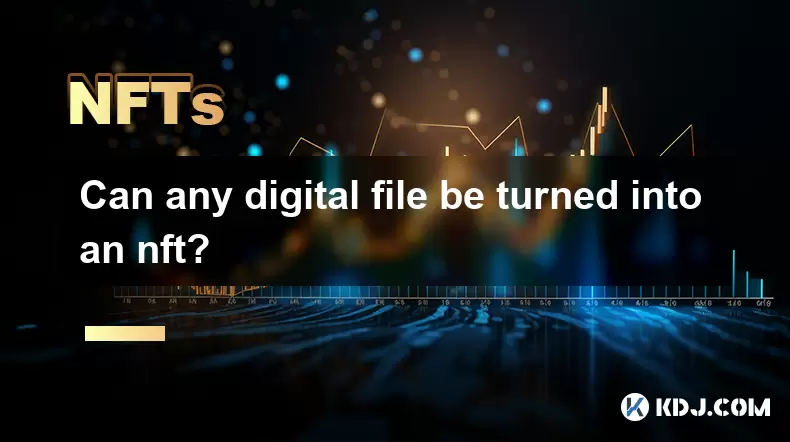
Can any digital file be turned into an nft?
Jul 01,2025 at 07:00am
Understanding the Concept of NFTsAn NFT (Non-Fungible Token) is a unique digital certificate of ownership stored on the blockchain. Unlike cryptocurrencies such as Bitcoin or Ethereum, which are fungible and interchangeable, NFTs represent one-of-a-kind assets that cannot be replicated or replaced. These tokens can represent various types of digital fil...

How to analyze an nft project's roadmap?
Jul 01,2025 at 12:01pm
What is an NFT Project Roadmap?An NFT project roadmap serves as a strategic plan outlining the development goals, milestones, and timelines for a non-fungible token initiative. It typically includes short-term and long-term objectives, key deliverables, team updates, partnerships, and community engagement strategies. A well-structured roadmap helps inve...
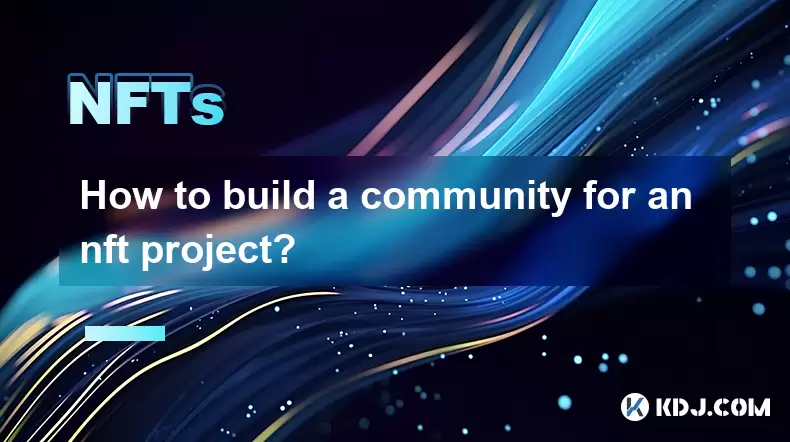
How to build a community for an nft project?
Jul 01,2025 at 07:28pm
Understanding the Core of an NFT CommunityBuilding a community around an NFT project starts with understanding what makes these communities thrive. Unlike traditional online groups, NFT communities are built on shared ownership, digital identity, and collective value. The foundation lies in creating a sense of belonging and purpose that goes beyond the ...

Can a physical item be an nft?
Jul 01,2025 at 06:07am
Understanding the Concept of NFTsAn NFT (Non-Fungible Token) is a unique digital asset that represents ownership of a specific item or content on the blockchain. While many people associate NFTs with digital art, music, or virtual collectibles, the question arises: Can a physical item be an NFT? The short answer is yes — but with important distinctions....

How is an nft stored on the blockchain?
Jul 01,2025 at 04:07am
How Is an NFT Stored on the Blockchain?Non-Fungible Tokens (NFTs) have revolutionized how digital assets are owned, verified, and transferred. Understanding how an NFT is stored on the blockchain provides clarity on its uniqueness, immutability, and traceability. Understanding the Basic Structure of an NFTAn NFT is a unique token that represents ownersh...

How to transfer an nft to another wallet?
Jul 01,2025 at 10:21am
Understanding the Basics of NFT TransfersTransferring an NFT (Non-Fungible Token) from one wallet to another is a common operation in the blockchain space. Before proceeding, it's crucial to understand what an NFT represents: a unique digital asset stored on a blockchain, typically Ethereum or other compatible chains like Binance Smart Chain or Solana. ...

Can any digital file be turned into an nft?
Jul 01,2025 at 07:00am
Understanding the Concept of NFTsAn NFT (Non-Fungible Token) is a unique digital certificate of ownership stored on the blockchain. Unlike cryptocurrencies such as Bitcoin or Ethereum, which are fungible and interchangeable, NFTs represent one-of-a-kind assets that cannot be replicated or replaced. These tokens can represent various types of digital fil...

How to analyze an nft project's roadmap?
Jul 01,2025 at 12:01pm
What is an NFT Project Roadmap?An NFT project roadmap serves as a strategic plan outlining the development goals, milestones, and timelines for a non-fungible token initiative. It typically includes short-term and long-term objectives, key deliverables, team updates, partnerships, and community engagement strategies. A well-structured roadmap helps inve...

How to build a community for an nft project?
Jul 01,2025 at 07:28pm
Understanding the Core of an NFT CommunityBuilding a community around an NFT project starts with understanding what makes these communities thrive. Unlike traditional online groups, NFT communities are built on shared ownership, digital identity, and collective value. The foundation lies in creating a sense of belonging and purpose that goes beyond the ...

Can a physical item be an nft?
Jul 01,2025 at 06:07am
Understanding the Concept of NFTsAn NFT (Non-Fungible Token) is a unique digital asset that represents ownership of a specific item or content on the blockchain. While many people associate NFTs with digital art, music, or virtual collectibles, the question arises: Can a physical item be an NFT? The short answer is yes — but with important distinctions....
See all articles

























































































